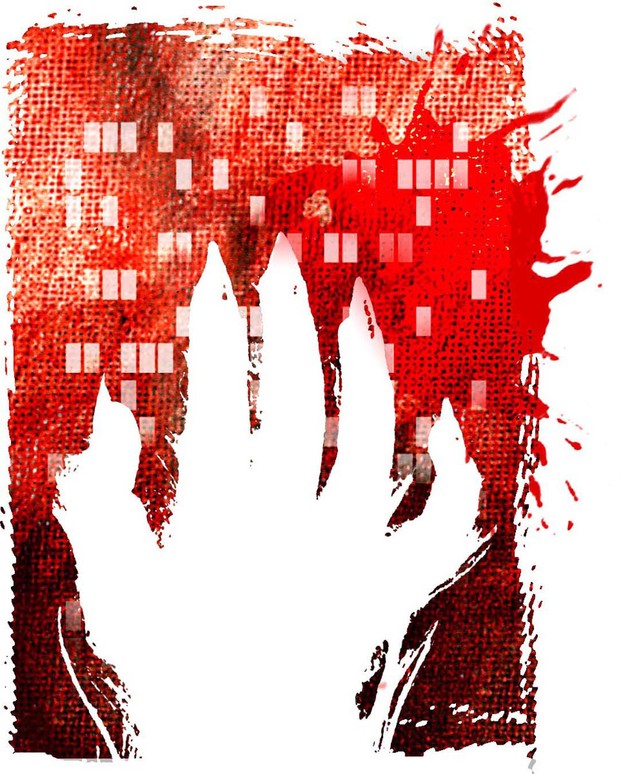Red Moon (8 out of 10) Written by Benjamin Percy.
Two summers ago I read “The Passage.” Justin Cronin’s story about an apocalypse wrought by mutating vampires scared the hell out of me. And I loved it. His sequel “The Twelve” was good, but didn’t thrill me as much as the first. Which happens with books. When I kept seeing “Red Moon” bubble up on lists of books to read this year, I figured I’d give it a shot. Benjamin Percy’s novel could be compared to “The Passage” in some respects, a world where werewolves are the villains instead of vampires–but I feel like “Red Moon” was more than that. Like Cronin, he treats the monster issue as if it were something really happening in our world–CNN would cover this the way they cover Ebola and downed Malaysian airliners. I should be clear that I’m not really a fan of the horror genre; I don’t read many books that have dismemberments or other gore. I went through a Stephen King kick in high school, but aside from that, don’t have much experience in bloodbaths. Well…in reading about bloodbaths. I’ve said too much.
That said, when it comes to monsters, I do have a personal preference for werewolves over vampires; I don’t know if it’s my own hairiness–for a while in my teens I was sure I was turning into a werewolf, but it turns out it was just puberty. There’s also my love of dogs, or the tendency to get moonstruck when the moon is low on the horizon–whatever it is, give me a werewolf any day. So “Red Moon” was more appealing than say, some Anne Rice book.
I was sure I was turning into a werewolf, but it was just puberty
There are multiple stories layered atop each other in “Red Moon,” but three characters and their stories stand out: Claire, Patrick, and Chase. Claire is a girl living in the woods of Wisconsin. Government agents burst into her home one night, killing her parents as they sit in the living room. Claire escapes out an upstairs window into the snowy night, and hitchhikes her way to Montana, where she moves in with an aunt she never knew. This aunt will train her in the ways of the werewolf–or the Lycan, as they’re called in “Red Moon.” Patrick’s parents divorced when he was young; now in his senior year of high school, Patrick’s dad is heading off to the Lycan Republic to fight against the bad guys, and Patrick has to live with his mom, who’s hiding secrets of her own. En route to his new home, Patrick becomes the only miraculous survivor of a Lycan attack–one that’s part of an uprising against the American government. Chase has always been a hero–on the football field, in the military, and now as the governor of Oregon. He uses the Lycan uprising to forward his own career, with disastrous results.
Each of these three stories will eventually overlap, and has multiple threads spinning off of their own. We eventually learn the broader history of the Lycans–in this case, there’s an alternate history going back thousands of years, and they’re seen as either a scapegoat or a problem that needs to be dealt with. After World War II, they have a homeland designated for them on the northern borderlands of Finland and Russia. This Lycan Republic is invaded by the United States in the 21st Century in the name of Homeland Security, and by the time the events in “Red Moon” take place, we’ve been in a frozen quagmire for more than a decade.

Some of the allegories in “Red Moon” could be more subtle, like the comparisons to the War on Terror. Others seem to be a natural outgrowth of the time that the book is both written and set in: it’s natural to bring concerns about immigration, about spreading disease, about race and identity. Can you imagine Donald Trump trying to deal with a presidential candidate with Lycan ancestry? Some of these comparisons Percy makes for laughs, but others are more chilling. Some teen vigilantes who simply call themselves “Americans” have a lot in common with white supremacists. Once a person is bitten by, or somehow comes into contact with the blood of a Lycan, they’re immediately shunned, similar to how many people treat those infected with HIV. It’s a book that had me thinking about modern society as much as any that I’ve read recently, fiction or non-fiction.
Some of the allegories could be more subtle
The book is a horror novel, and there’s plenty of blood, sex, well–things that make it a horror novel. I flinched a few times at some scenes, and it’s not something I’d recommend to sensitive readers. If you’re used to books like this, it’s probably pretty tame–and I don’t think the violence is as pervasive as in “The Passage” and “The Twelve.” It’s used more as punctuation than as a tapestry of gore. If you’re looking for a good chill going into these cold winter days, I recommend “Red Moon.” It’s dark, and sobering, and a hell of a lot of fun.